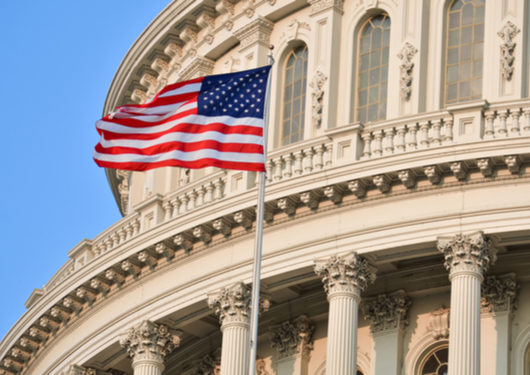
U.S.-based corporations are reported to have between $2tr and $3tr stashed away in offshore accounts, to avoid paying high taxes on domestic income. Apple alone is said to be holding some $269bn in cash and cash equivalents through its overseas affiliates.
American companies have been loath to bring that money back to the U.S. because it would become subject to a repatriation tax rate of up to 40 percent. Under the new tax reform bill, however, that number drops to 15.5 percent — a strong incentive to return the cash to domestic coffers.
For companies contemplating such a move, the question remains: What will they do with the cash when it comes home?
In theory, the money could be put to work building new factories, increasing output and hiring more American workers. But the results from previous tax holidays have not been encouraging. Passage of the American Jobs Creation Act of 2004 allowed U.S. multinationals to repatriate foreign profits at a tax rate of 5.25 percent. The law enriched the U.S. economy by an additional $362bn. But companies used most of the money to repurchase shares, reward investors with higher dividends, and swallow up other companies.
What’s more, the biggest tech companies, which account for a large portion of the offshore holdings, only ended up returning about 9 percent of their cash to the U.S. Those who thought the bill would jumpstart the economy were bitterly disappointed.
At least one recent survey suggests that the result could be different this time. Late last year, prior to passage of the tax bill, financial technology provider C2FO surveyed corporate treasurers and other financial executives about what they would do in the event of a repatriation tax holiday or deep tax cut. Forty-six percent said they would return cash to the U.S. Of those companies, 62 percent said they would invest in technology updates, and 59 percent would pursue short-term, low-risk investments such as Treasury bills and money market funds.
Now that tax reform is law, it remains to be seen whether companies will follow through on their promise. Sean Van Gundy, managing director of working capital advisory with C2FO, estimates that several hundred billion dollars could be infused back into the U.S. economy as a result of the bill.
Still, over half of the companies surveyed by C2FO last year indicated that they wouldn’t take advantage of a tax cut on repatriated profits. As Van Gundy points out, they’re still subject to local taxes on offshore funds, and if those taxes have already been paid, they might not be interested in exposing the money to additional levies, however low.
For big multinationals, the question of whether or not to repatriate isn’t a simple one, says Van Gundy. Many might say no to the question while they attempt to calculate the long-term impact of such a decision.
In any case, Van Gundy says, a 46-percent rate of repatriation “is still a significant number.”
He acknowledges that executives will be under intense pressure from shareholders to distribute any additional profits in the form of higher dividends. So even those who say they will invest the money wisely might be unable to fully follow through on their plans.
Van Gundy believes the corporate landscape is different from what it was in the early 2000s and during the Great Recession of 2007-2008. “The mindset has changed a little bit,” he says. Many now see the need to focus on the development of new products, and investments in plants and equipment.
One strong incentive for bringing the money home is the availability of financial technology products, including working-capital marketplaces, that speed up payments to suppliers while letting manufacturers hold onto their cash for longer periods of time. “Anecdotally,” says Van Gundy, “we’ve seen more interest from people trying to leverage trade-finance programs.”
Moreover, companies are beginning to take a broader view of working capital. Where in the past they might have focused primarily on days payable outstanding (DPO) as a financial metric, they’re now giving equal attention to days sales outstanding (DSO) and inventory levels. All three measurements go into calculating a company’s working capital position. In the event, says Van Gundy, the role of treasurer and other financial managers becomes far more important to a company’s long-term strategy.
All the same, there are few indications that U.S. companies will transform a repatriation windfall into investments in new equipment and plant capacity — the kind of actions that would have a measurable impact on the economy. Nor are they expected to boost hiring by any meaningful amount. Such moves are driven solely by increased consumer demand, not the sudden availability of mad money that can be used for any number of purposes.
Then there’s the question of whether companies will continue to hoard cash, as they have in the years following the recession. Low interest rates have made it possible for them to access funds cheaply, without tapping into cash reserves. That situation could change if the Federal Reserve Bank follows through on its plan to increase interest rates multiple times during 2018.
Should the economy continue to perform strongly, the resulting bump in consumer demand might well drive companies to invest their substantial cash reserves in new production capacity. But don’t count on a cut in the repatriation tax rate to yield that result by itself.







